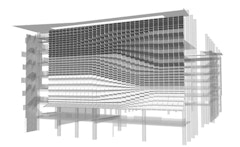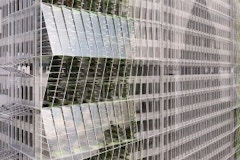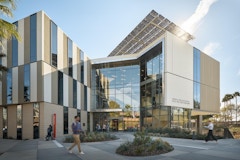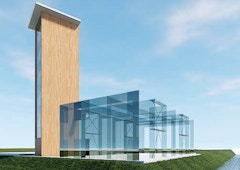
Towards A Data Driven Fabrication Process
Today's evolving digital tools allow designers to be more creative in designing new forms and geometries. Adapting similar tools to the fabrication

Today's evolving digital tools allow designers to be more creative in designing new forms and geometries. Adapting similar tools to the fabrication
Los Angeles, CA – July 16, 2015 - While most of the green building dialog focuses on new construction, many have recognized that the fastest and most effective way to improve energy efficiency of the building sector is by remedying our existing building stock.

Metals in Construction magazine and the Ornamental Metal Institute of New York named six winning teams for its 2016 Design Challenge yesterday at the Times Center in New York City. “Reimagine a New York City Icon” challenged designers and engineers to reclad 200 Park Avenue in New York.

The design of structural glass systems continues to evolve with the parallel development of new manufacturing technology. Improvements in the



Glass has become a popular building material that is used not only for windows but also as a load-bearing material. New dimensions of glass panes in

Photovoltaics (PV) have been utilized in buildings for decades, especially in Europe where legislative support has largely driven the market. With
The conventional approach to specifying dimensional tolerances in architecture and construction is inadequate in the theater of premanufacturing

The Green Village at the TU Delft is a living lab for sustainable innovations. The Co Creation Centre (CCC) will be their new meeting center (13.5 x

There is a growing awareness and interest in understanding the carbon footprint of material manufacturing, opening doors to new opportunities in facade design and manufacturing innovation. There are steps and decisions we can make today to help fight climate change.


A small team of digital designers at the Schüco Virtual Construction Lab (VCL) in NYC is developing a new way for clients to experience and evaluate facade products. The VCL will be demonstrating the technology at the conference in Los Angeles on March 12-13.

Highly transformable materials can be used as adaptive exterior shading systems by leveraging the relationship between external stimuli (heat) and

Special guests Gail Napell AIA LEED AP BD+C and Rives T. Taylor FAIA, LEED Fellow of Gensler join us to address engineering and design considerations for new construction, as well as the need for adaptability of existing buildings. This episode is co-hosted by Mic Patterson and Ted Kesik.